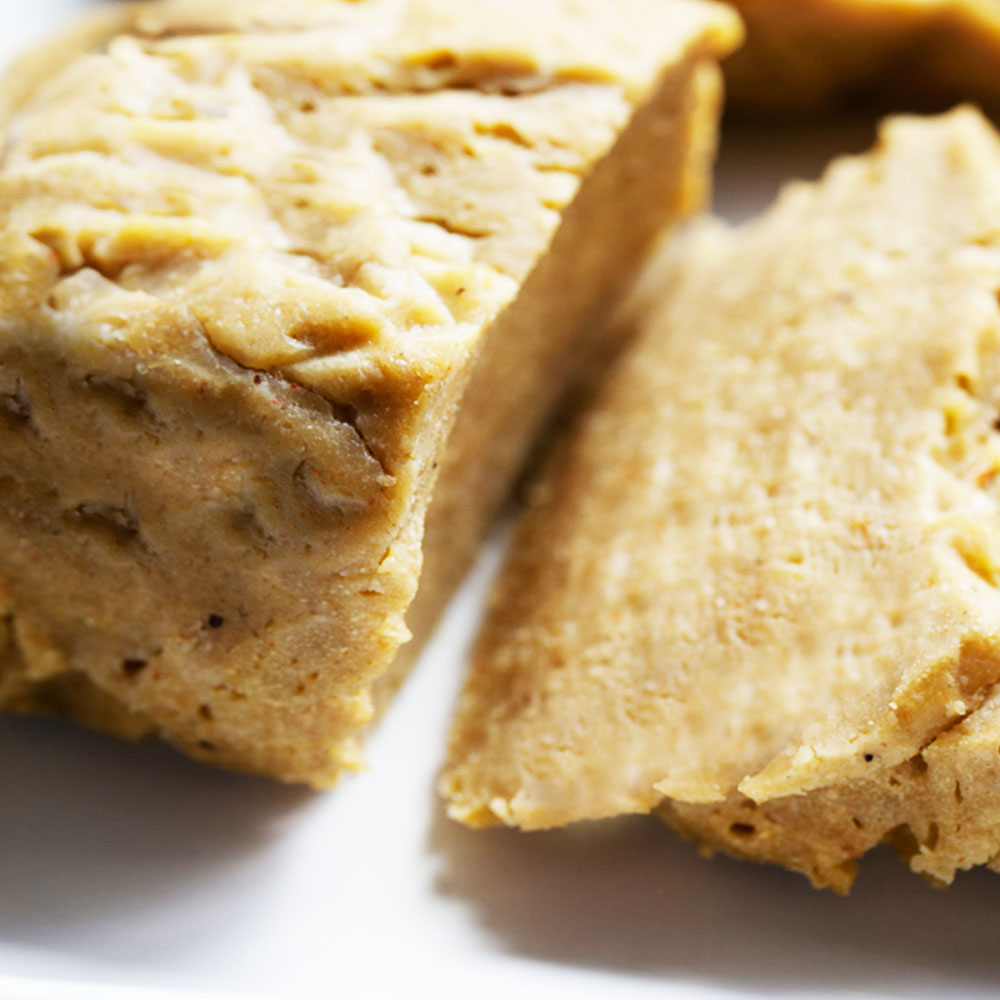
The origin of the name seitan is not well defined. It is generally attributed to Georges Ohsawa, promoter of macrobiotics, food for energy and health. It would be the combination of two Japanese words: "sei" to "become" or "from", and "tan-" to "tanpaku", or "protein". This would be basically the "protein-based".
Seitan is the macrobiotic equivalent of miàn jīn (麵筋) in traditional Chinese cuisine, since it is also prepared from wheat flour. It is also called "Buddha food".
As for the origin of seitan, it goes back several centuries, since the Zen Buddhist monks, strict vegetarians, made it already a thousand years ago in China. A very high protein ingredient.
The main interest of seitan is its high protein content: the preparation contains 25%, against 20% for beef or chicken. It contains no purine and no cholesterol. On the energy side, count 110 calories per 100 grams, for a low fat and very digestible preparation.
Seitan is also a good source of B2 vitamins and a food rich in iron.
There are three primary Chinese forms of wheat gluten:
1. Oily/oil fried gluten (油麵筋, yóu miàn jīn): Raw gluten that has been torn into small bits, then deep fried into small puffy balls of around 3–5 cm in diameter and sold as “imitation abalone”. They are golden brown in color, and braised or boiled in a savory soup or stew before eating. They are frequently paired with xiang gu (black mushrooms).Larger fried balls of gluten, called miàn jīn qiú (面筋球) or miàn jīn pao (面筋泡), which may be up to 5 inches in diameter, are sometimes seen in Asian supermarkets. These are often stuffed with meat or tofu mixtures and served as a dish called “gluten meatballs” (面筋肉圆, Miàn jīn roù yuán) or “gluten stuffed with meat” (面筋塞肉, miàn jīn saī roù).
2. Steamed gluten (蒸麵筋, zhēng miàn jīn): Raw gluten that has been wrapped around itself to form a long sausage shape which is then steamed. This type of gluten has a dense texture and ranges from off-white to light greenish grey in color. It is torn open into strips before being used as an ingredient in recipes. When this sausage-shaped gluten is thickly sliced into medallions, the resulting form is called miàn lún (麵輪, literally “gluten wheels”). Larger blocks of steamed gluten are sometimes colored pink and sold as vegetarian “mock ham.”
3. Baked spongy gluten (traditional: 烤麩; simplified: 烤麸; pinyin: kǎo fū): Similar in texture to a sponge, kao fu (sometimes labeled in English as “bran puff”) is made by leavening raw gluten, then baking or steaming it. These are sold as small blocks in Chinese markets and are then diced up and cooked. This type of gluten absorbs its cooking liquid like a sponge and is enjoyed for its “juicy” character. Chinese kao fu has a different texture than its Japanese counterpart, yaki-fu, due to the relatively larger air bubbles it contains. Kao fu is available in fresh, frozen, and canned forms.





